Kudo Tsunoda has never been a wallflower – as head of EA Chicago, he was the face of such bolshy franchises as Fight Night and Def Jam. But even he must have found it slightly daunting when he was briefly thrust in the glaring spotlight during his time as creative director of Project Natal – later Kinect. Now, Tsunoda assumes a quieter – yet busier – role working across Microsoft’s impressive portfolio of studios. He recently found time to catch up with OXM about the future of first-party software on Xbox One…
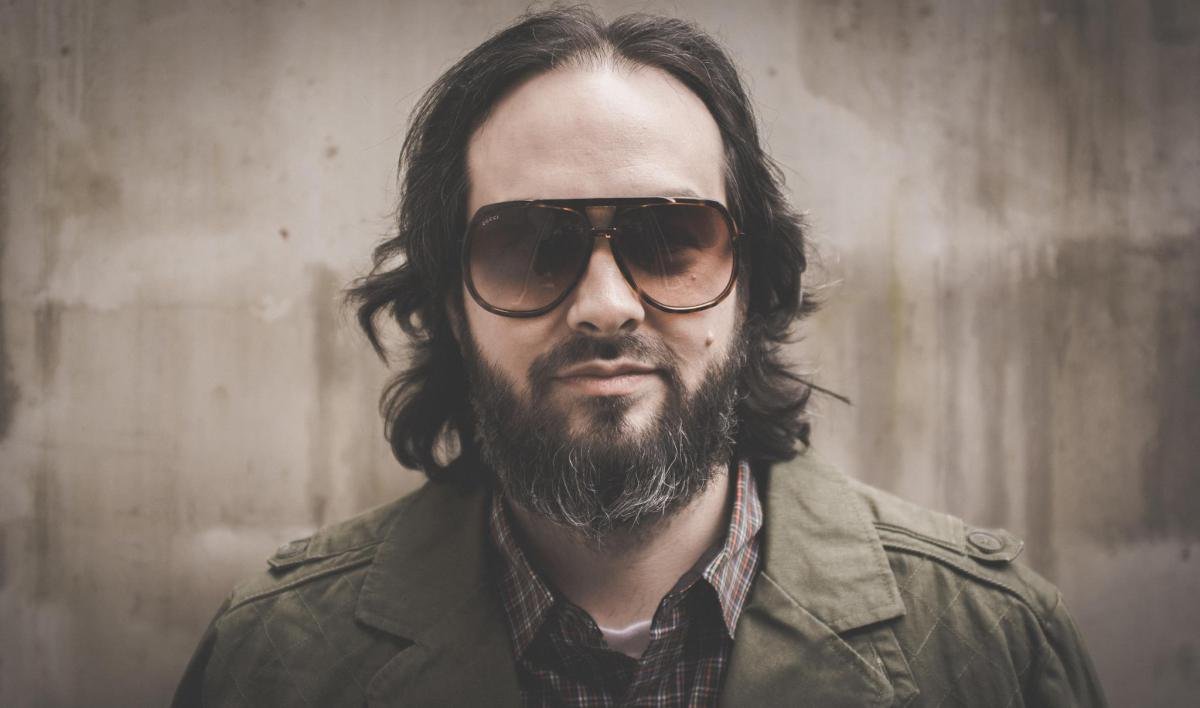
In your newly expanded role, you’re tasked with overseeing numerous studios – Rare, Lionhead, Twisted Pixel and Lift Games, to name but some. Can you tell us about your day-to-day interaction with these companies?
It’s great that I get to work with a lot of different types of teams making a bunch of different games – not just our internal dev teams, but also with our partnerships with other developers – games like ReCore, Quantum Break, Scalebound. A lot of what I just try and do is communicate the things that we’re trying with Xbox and Windows 10 to really bring gaming communities together, and allow gamers to have a choice of who they’re playing with, and also for them to play on whatever platform they like. That’s one of the things I’m most excited about. You should be able to connect with people regardless if they’re a PC gamer or a console gamer. So I think that’s one thing we’re super excited about, is just bringing those two communities of people together so that they can have fun playing games together, which is the whole point.
How have the studios approached the challenge of designing a game that’ll resonate with both PC and console players?
It’s not just technical issues; I think that subconsciously there’s a feeling that someone who plays on PC rather than console wants something slightly different from their games. I think the stuff we really focus on is making sure that the interface, the way you play it, works as well regardless if you’re on a console or you’re on a PC. You know, one of the biggest things is that lots of times the controls of a console product don’t really transfer over to a PC, [or vice versa]. And so what we really focus on is making sure that the input and the way you control the experience works really intuitively and fluidly regardless of what platform you’re on. I think that goes a long way towards making the gameplay experience feel customised for each of those different audiences.
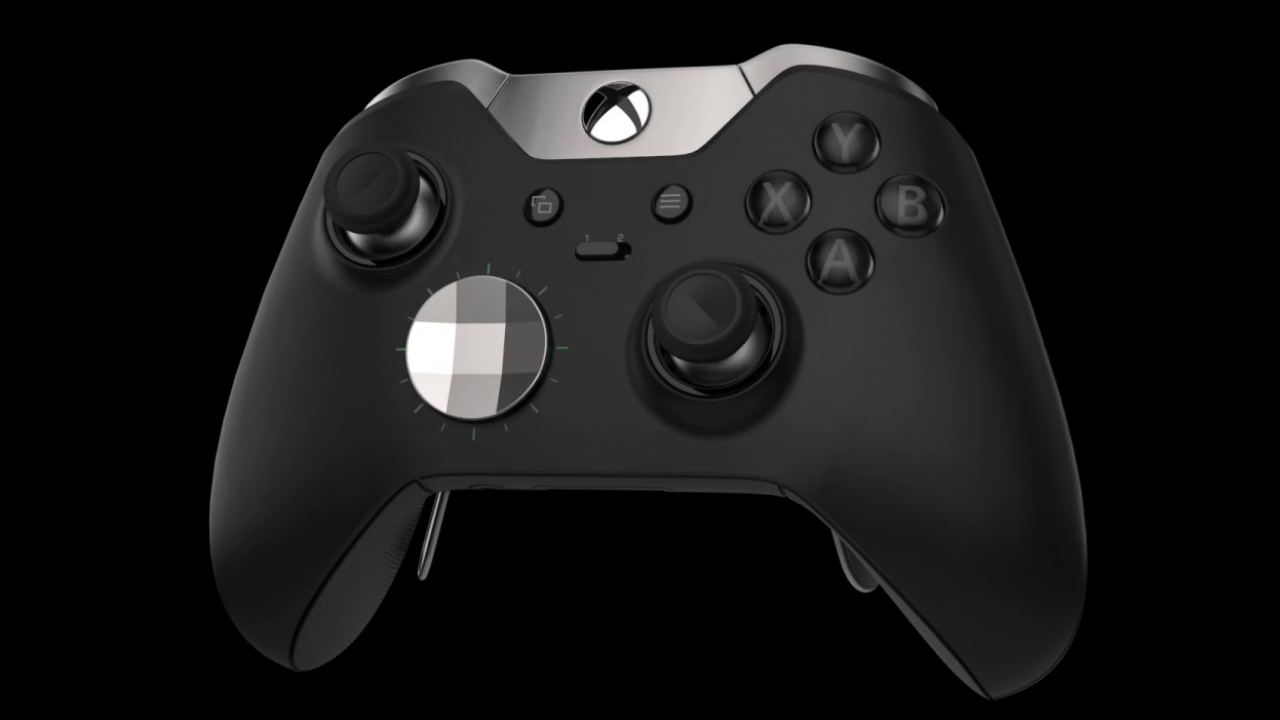
I think Microsoft has been clever in that it’s positioned the Xbox controller as the go-to PC controller. What kind of opportunities does it open for Xbox if PC developers are already designing for the same controller as Xbox?
I’m a big fan of our controller. I think it’s the best gaming controller in the world, and so I think there’s just one really great thing for gamers – that you’re going to be able to have our super high-precision gaming controller working on not only your console but on PCs, and that just makes gaming more fun for everybody. As you know, the other day we announced our Elite controller, and that’s really giving people as much customisation for the controller as they could want. I think Phil [Spencer, head of Xbox] said it great in the keynote [at E3]. It’s not just about what you play; it’s about how you play. And I think when we’re talking about the difference between controls, gamers want to feel like that the controller experience is able to be customised around the way that they like to play. That’s just a big thing we’re always doing at Xbox.
Sign up to the GamesRadar+ Newsletter
Weekly digests, tales from the communities you love, and more
We played with the Elite controller at the Showcase event, and it seems geared towards high-end or professional players. Some of the features are things that maybe a lot of casual players wouldn’t pick up. Is this controller geared at tournament players, or do you think that we’re in an age now where even casual players have grown up with the Xbox-shaped controller and will start demanding more control over it?
That’s a thing to me. People love customisation, and the generations coming up expect the ability to customise things around the way they like to do things. I think that’s the part that everybody’s going to appreciate.
"I’m a big fan of our controller. I think it’s the best gaming controller in the world."
The idea that console players crave customisation is interesting in the wake of the news that the Xbox One version of Fallout 4 will support mods created on PC. Is this something that first-party studios are eager to get in on?
That’s a really fun part of gaming. The more that you can get your fans and community involved in helping to shape and build a product, I think that’s a very positive thing – not only from a modding perspective, but also in thinking through ways that we can get fans integrated into the development process of our titles much earlier on. I think you saw stuff with what we announced with Game Preview, allowing fans to see early versions of games and to be able to provide feedback on them. Creatively, I’m interested in seeing if there’s ways that we can really change our development methodology to include fans at a much earlier stage, because more than any other industry I think gaming fans have really awesome ideas for what could go into games or how features should be developed.
Xbox as a brand has clearly been listening to fans for quite a while, because the Xbox One has changed very dramatically over the past two years from what the console was originally imagined to be. What sort of direction is Xbox One heading in?
I think you can see that we listen, and that it has a huge influence on the big features that we deliver. for example, our announcement at E3 that Xbox One would support backward compatibility with Xbox 360 games. I mean, that was the most highly requested fan feature and something that people were asking us about at the launch of Xbox One. I didn’t even think it would be possible that we could enable that technically, and yet it was such a fan-requested feature among our community that we went and dedicated a big part of the super-talented people we have working on the tech on just going and figuring that problem out. I think that’s what you see in our platform – that’s what you see in the types of games that we build and, like I said, I think you’re going to see it in us integrating fans’ voices into our products at a much earlier stage, because I think it really does help make the experience better for gamers. It makes the games more fun, and a main driving force in deciding what we’re doing is just trying to provide that highest value possible for our fans.
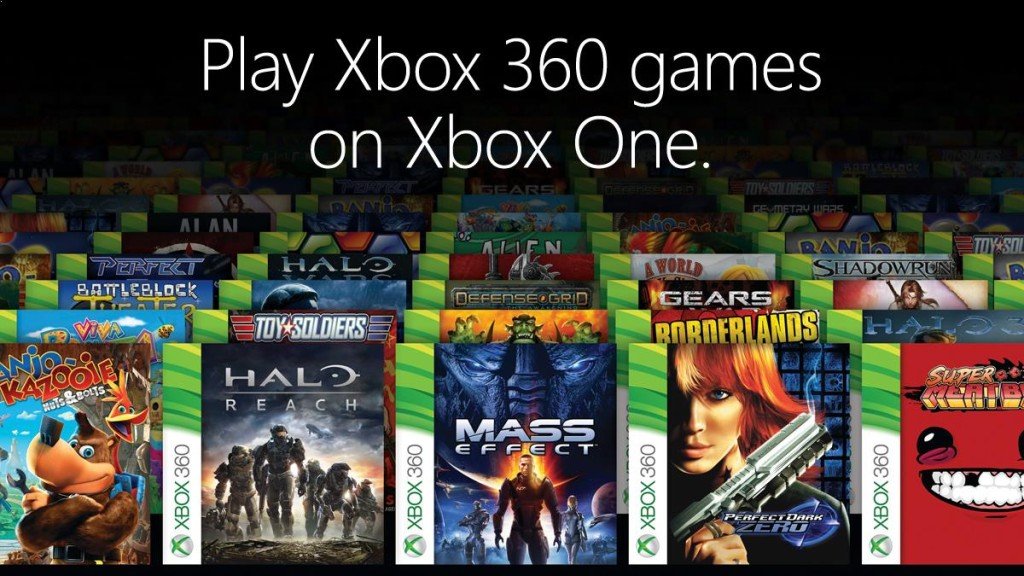
Can we expect 100% backward compatibility? That’s no mean feat from a technological standpoint. Even the PlayStation 2 didn’t achieve it – and that had a PS1 chip built into it…
So, we’ll start with 100 titles this autumn, and we’ll be adding titles as time goes by. At some point we’re going to need to get – obviously – the permission of the owners of the content, the publishers and the developers. So 100% is always a hard thing to achieve in anything. There’s a possibility for some outliers, but we’re really going to work on getting the biggest catalogue of games on any platform onto Xbox One via not only our exclusive blockbuster titles that we’re delivering this fall, [but also] our indie games plus backward compatibility. Again, that’s just enormous value for gamers.
As I understand it, the backward compatibility is emulation-based – it’s not reading off the disc. That was a really sore point with the original Xbox to Xbox 360, as the emulation was really wonky. From what you know of it, what’s been learned since that time?
That’s why I really love working in the software industry, because I’m just such a big believer that anything is possible through the power of software – whether it’s making something like backward compatibility work that we really did not think could work, whether it’s making amazing games that we saw in the keynote, or whether it’s making holograms appear in your room. That’s all software-based invention. That’s the power of software and why it’s fun to work in the industry. You could make anything happen if you just figure out the ways you can do it with software.
"We’re really going to work on getting the biggest catalogue of games on any platform onto Xbox One."
It seems to me that Microsoft is very keen to ensure its first-party studios have a purpose. So we’ve got 343 that handles Halo, The Coalition handling Gears of War. I’m going to start with Rare first, because that’s a studio that’s kind of in flux at the moment, in terms of what its role is going to be within Microsoft going forward. What sort of space do you see Rare occupying going forward?
First of all I wouldn’t say that rare is in flux in any way. I mean, I think it was a huge part of our keynote [at E3] - Maybe that’s the wrong word. I mean it’s coming out from very Kinect-heavy duties and maybe it’s going in a different direction now… You could see in the two Rare products that we talked about at E3 – Rare Replay and Sea of Thieves – that famous spirit of Rare and the amazing kind of character that you associate with Rare games really came through in both. And I think, for one, Rare Replay really shows off the 30 years of what Rare has done that makes games awesome. The funny part is, when you talk to people about Rare Replay, everybody has a different game that is their favourite that they remember, and that has created an emotional and personal memory for them – and that’s the amazing thing about Rare games.
Can you talk to us about what sort of form Sea of Thieves takes?
I think with Sea of Thieves, what you’re really going to see as you find out more about the game is that it’s also about allowing people to create their own gaming memories. It’s about enabling people to create their own stories through limitless possibilities, and I think that’s what Rare has always done a great job of historically – it is great at creating these super emotional memories and attachments that people have to games. I think what you’re gonna see in Sea of Thieves as we go forward and start talking more about the game is how [the studio is] enabling that kind of player-generated emotional and memory-driven stories that can happen within a game to happen within Sea of Thieves. And I think that’s what Rare does well. That’s what we’re going to keep having them doing in the future. And Sea of Thieves is gonna be the best game that Rare has ever made.
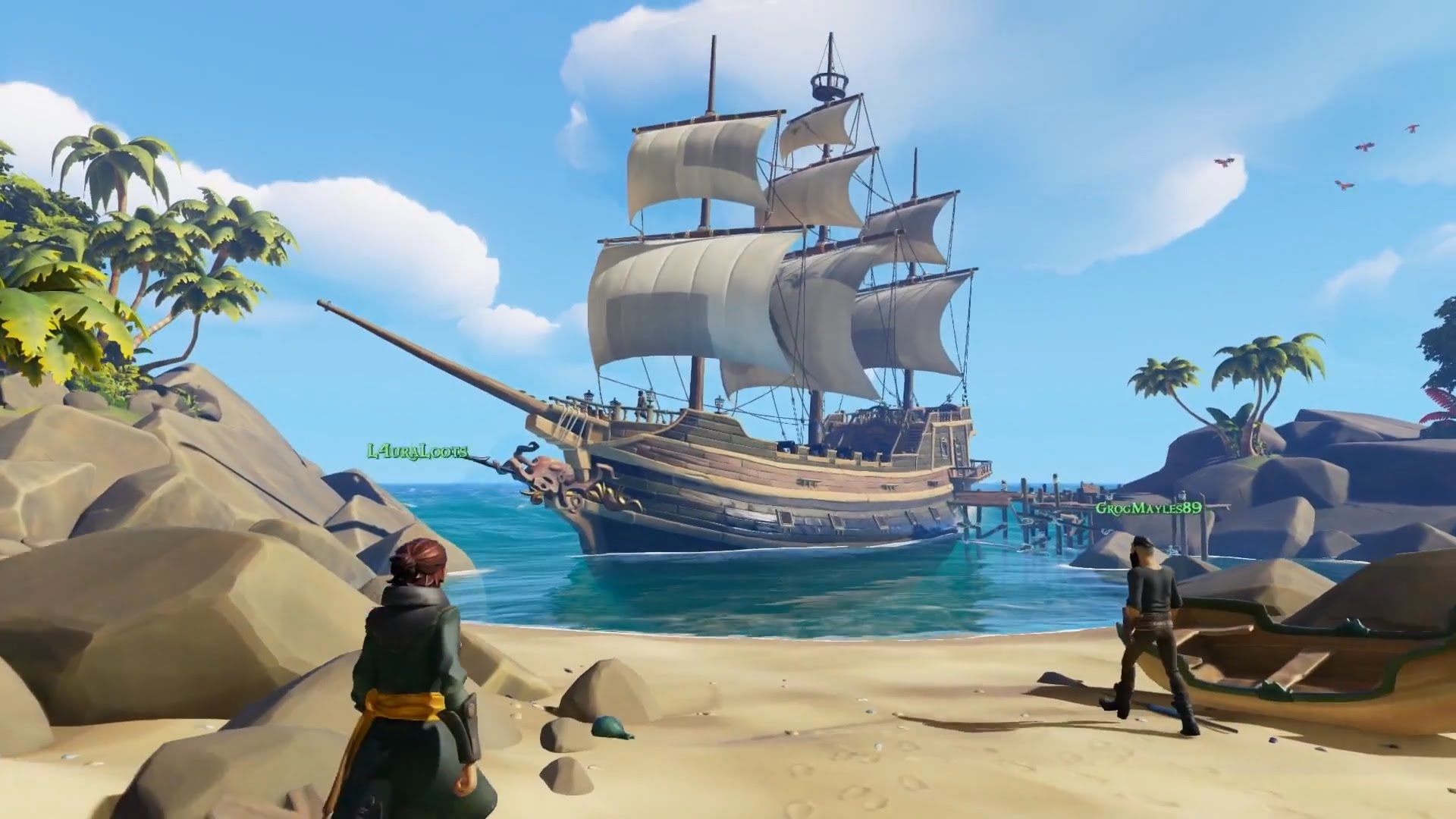
Yikes. Talking of bold promises, up next up is Lionhead. That’s another studio that is currently undergoing something of a culture change, with the departure of long-time figurehead Peter Molyneux. What do you see as the future for Lionhead?
The future very clearly is Fable Legends. It’s a game that has very different gameplay to previous versions of Fable, but there are some things that are just inherently Fable about it. You know, the dynamic of good versus evil, being able to make choices about which way that you play, obviously just the whole environment of Fable. The quirky humour, I think, really shines through in the title as well. So, you know, with Lionhead I don’t think it has anything to do with not understanding the future of [the studio] so much as just knowing that, ‘Hey, it’s making Fable Legends.’ we’re very focused on making Fable Legends the best game we can and then keeping it running as a service going forward. I think that’s just a bit different in the way that we think about games, that it’s not a, ‘Hey, we’re going to go ship this disc, we’re going to go make some DLC, and then we’re going to move onto the next game,’ as much as [it is] how the team can evolve and grow and build Fable Legends over time into a more service-based community of gamers. I think that’s just a really interesting switch for Lionhead.
If we look back at what Lionhead has worked on recently, it’s been stuff like The Journey, Fable Legends – stuff that takes the core Fable RPG series and expands it in different areas. Is Lionhead firmly ‘the Fable studio’ now or do you see that it’ll have the freedom to work in different universes and on different projects in the future?
I think Lionhead certainly has all the talent and capabilities to build stuff outside of the Fable universe. It’s just obviously Fable is an IP that Lionhead loves working with. The fans love Fable and so, you know, in the near future all we’re really talking about with Lionhead is Fable Legends, but obviously it’s a very talented group of people that could be working on a lot of different products and do them well.
"Sea of Thieves is gonna be the best game that Rare has ever made."
I just want to talk a little bit about HoloLens. Were you pleased with how the Minecraft demonstration went, having worked on it so closely?
Yeah, I mean, it’s so funny because there are very few times that you can do an E3 keynote and get an audible gasp out of several thousand people all at once. And then you saw when the table started dissolving and then the Minecraft world came out, and you just heard, like, gasping come from the whole crowd. That’s amazing. You know, it gives you goosebumps; you’re sitting there watching it. So how could you not enjoy that kind of reaction? Certainly. I think it’s hard at these shows – one, to have surprise announcements, and two, to keep the surprises as surprises without them leaking. It was just so amazing listening to the crowd response as we went through the HoloLens demos. You don’t get very many moments like that at E3.
HoloLens and Minecraft seem like they’re kind of made for each other in the way that they combine to capture the magic of a user-made creation popping out into the real world. I was just wondering, coming from a more core gaming background, what sort of uses you feel that the technology will have in the future when it becomes more commonplace and it starts integrating with more traditional consoles?
Again, I don’t know if it’s initially about integrating with consoles as much as providing holographic gaming experiences. I mean, we’re very early on in exploring the possibilities of what holograms can do in any kind of area – but early on with games, one thing we’ve identified is the ability to incorporate your real-world environment as part of the gameplay. So, you know, if you’re playing a game on a screen and you’re playing through level one at your house and I’m playing through level one at my house, we both get the same level one. The gaming environment is the same. But, because we’re able to incorporate your real-world environment into the game, it makes a very unique and personalised experience to you – the way the game plays is dictated by your physical environment and where you’re playing. It’s awesome, because even in my own house I can go play a game in my living room, and then I can go into my kitchen and get a very different gameplay experience. So the variety of gameplay and the uniqueness of that, based on your real-world – I think that’s one of the compelling cases for its use. Then the other thing is, I think core gamers love character-driven games. They love the characters in their games; they love narrative; they love stories. It’s amazing the level of emotional engagement and attachment that you can get through having characters come into your own space, like, walk around your living room, sit down on your sofa, having a narrative play out in your own home. There’s something about the emotional immediacy of having the characters and the stories happening in your familiar home environment that really drives a high level of emotional intensity and attachment to the stories and to the characters.
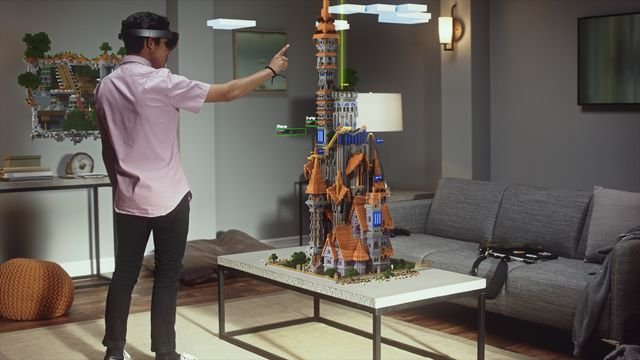
I want to talk about the challenges that face the technology in terms of scalability, because not everyone has got the same sort of playing space. It’s a little bit like the challenges that Kinect was met with – American living rooms are a lot bigger than the ones that British people have. How much of a challenge is it to get something working that can work across multiple different surfaces, multiple different house types?
I think the challenge when you talk about Kinect and space is that you’re moving around a lot, right? So that doesn’t work so well in a small environment, and that’s clearly understood. But, you know, with Microsoft HoloLens it’s just completely different because the depth-sensing technology we have can really understand everything about your environment in a 3D way. It’s not about needing more or less space; it’s just about understanding the space and then figuring out ways to put the holograms in there. So if we talk about a holographic character walking around your living room, if you have a big living room we can have the character sit on your sofa, or the character can go walk across to the other end of the room and lean against your wall or sit in your chair over there. We’ll understand all these surfaces, and the character can interact with them. But if you have a smaller space, then I can just have the character sit over here or, you know, just go to that part of the room, and because we have the understanding of what is going on in your space, you can have the character do very specific things that are really tailored to your environment, and I think that’s the awesome part. You know, not only just making it good for everybody no matter what kind of space they have, but then also, in your house you probably have rooms of different sizes so when you go play a game in one room or another you get a very different feel to it, and I just think that’s a really cool and unique part about holograms.
The British are very proud of their coding background. Working so closely with British studios, what do you think they bring that developers from other parts of the world can’t?
I wouldn’t speak to just British developers as an overall generalisation. I would just say, very specifically, with the teams that I work with at Rare, at Lionhead, and then our Lift London team as well, we have a high level of technical excellence across all of the different teams. Another thing that stands out is the amazing storytelling ability of those groups. You know, that they’re able to generate content that really connects with people emotionally? And it’s not just about the action or the pacing of the games. They’re really able to create characters, stories and environments that connect emotionally with people – and I think you can see that that’s part of what makes rare games special; it’s part of what makes Fable special; it’s great in the products that I see coming out of our Lift London team. They’re really able to drive that emotional connection between people and their content.
"In your house you have rooms of different sizes so when you go play a HoloLens game in one room or another, you get a very different feel."
My final question is, Xbox One has overcome a lot of challenges. What are the key areas Xbox is looking to grow in over the next six months to a year?
You can see that what we’re focused on is just delivering high value for our gaming fans – and I think a big part of that is just listening to fan feedback, which we’ll always continue to do. I think it’s amazing, and this is just a job that you can see us doing in things evolving here at E3; the amount of big, blockbuster, exclusive titles that you can get this holiday on Xbox is just stunning. I mean, it’s really amazing – I think if you look at our competition there’s no way that people can really stack up with our exclusive content, and that’s an amazing part of what we’re doing at Xbox. And then stuff that I’m just super-excited about is the variety of content. Backward compatibility obviously is huge value for people, and we’ve got our blockbusters, but then you also see titles that really have a different look and feel to them – like Gigantic, a very different-looking game but super fun; ReCore; our awesome ID@Xbox games such as Cuphead. I think our exclusive content, the variety of gameplay that we’re able to provide people on xbox, and then of course, the high value that comes with enabling things like backward compatibility and listening to our fans – I just think that’s where Xbox really shines.



